Modern outdoor lighting owes its popularity and diversity to key features like waterproofing and dust proofing. Today you can easily determine the durability of a light fixture by looking at its IP rating.
We cannot downplay the importance of the IP rating system. It conveys so much information in just four characters. Though these IP codes have several benefits, the numbers can be quite confusing.
This article will break down the complexities of IP ratings into a simple and understandable guide that’ll help you buy the best lighting for your project.
Let’s get started.
What Does IP Rating Mean?
IP stands for Ingress Protection, and an IP rating (or code) categorizes an electronic device enclosure’s water and dust proofing capabilities. An electronic device gets an IP rating based on its performance in a set of standardized tests.
The International Electrotechnical Commission (IEC) defines the testing guidelines, and only an IEC-certified company can issue an IP rating.
IP ratings are valuable tools for buyers as they provide a simple and easy-to-understand way of identifying product capabilities. Higher numbers in the IP rating indicate better protection against environmental damage.
IP Code Explained
The standard IP code comprises four characters, two letters, and two numbers. The first two characters for every code are the letters IP which stands for Ingress Protection.
Next is the third character, which is a number that represents the level of resistance a device has to solid particle penetration.
- Zero is the lowest level, and a device rated as such will have no protection against solid particles like dust and other small objects.
- Six is the higher level and indicates that the device is completely dustproof.
And finally, we have the fourth character, which is also a number and represents the level of resistance a device has to liquid penetration.
- Zero is again the lowest level and indicates that the device has no protection against liquids.
- Nine is the highest level, indicating that the device will stay waterproof even when exposed to a high-pressure and high-temperature liquid jet spray.
How Does the IP Certification System Work?
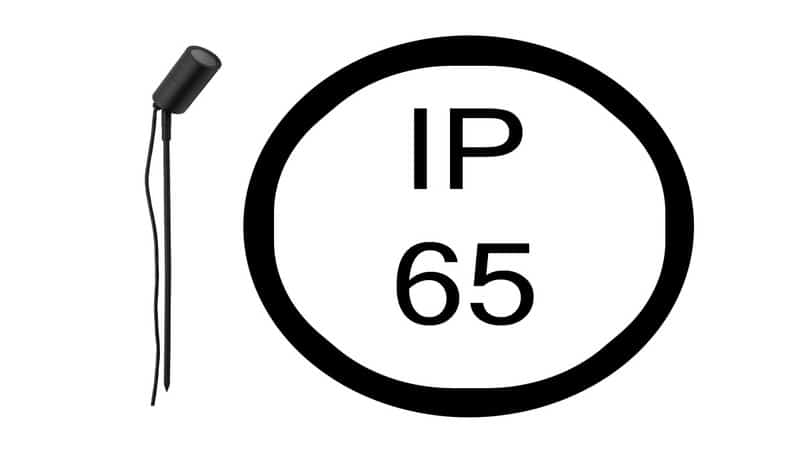
Getting an IP certification is a simple, sometimes tedious process. A manufacturer submits a working product sample to an IEC-certified testing company and declares the expected IP rating.
The company runs the products through a series of rigorous tests per the IEC guidelines. Multiple samples are required for each test to ensure consistent results, and the product will only receive a passing grade if it is still in perfect working condition at the end of the tests.
Even minor damage will result in a failing grade.
The company only tests the submitted version of the products against the designated (declared) IP rating. Improved and revised designs need to be resubmitted for certification.
Take the example of the iPhone 8 from 2017 and the iPhone SE (3rd Gen.) from 2022. They share the same chassis and seals. But only the iPhone 8 was tested and certified as IP67 compliant.
Apple had to submit the iPhone SE for testing again before they could put the IP67 certification symbols on the product.
Speaking of IP certification symbols. There is no standard ingress protection mark, symbol, or badge for certified devices.
Manufacturers can choose to display their IP certification however they want. Some prefer custom IP badges that match their product branding, while others put plain black text on the box.
Dust Protection Tests
Seven dust (solid objects) protection tests are outlined by the IEC, ranging from zero to six. Following is a brief overview of the testing criteria used to judge the ingress of foreign objects.
| Level | Particle Size Protection | Description |
| X | – | Not tested or insufficient data |
| 0 | – | Zero protection against solid objects |
| 1 | > 2 in. | Large objects like human hands cannot enter |
| 2 | > 0.5 in. | Small objects like fingers cannot enter |
| 3 | > 0.01 in. | Tools, thick wires, etc. |
| 4 | > 0.04 in. | Small screws, ants, etc. |
| 5 | Dust Protection | Some dust may enter, but not enough to interfere with the safe operation |
| 6 | Completely Dust Proof | Zero chances of dust ingress into the electronics. |
Water Protection Tests
The water protection level for outdoor lights is harder to determine as factors like temperature, pressure, and flow rate can affect water’s ingress capabilities.
Hence, there are over eleven water protection tests ranging from zero to nine, including special tests like 6K and 9K.
The details of the several testing criteria used for water ingress protection follow.
| Level | State of Water | Description |
| X | – | Not tested or insufficient data |
| 0 | – | Zero protection against solid objects |
| 1 | Dripping Water | 10 mins of slowly dripping water. |
| 2 | Dripping water at 15° | 10 mins of slowly dripping water at different angles |
| 3 | Spraying Water | 5 mins of dispersed water spray |
| 4 | Water Splashes | 5 mins of direct water spray |
| 5 | Water Jets | 3 mins of high flow rate (12 L/min) water spray |
| 6 | Powerful Water Jets | 3 mins of even higher flow rate (100 L/min) water spray |
| 6K | Powerful Water Jets at High Pressure | 3 mins of higher flow rate (75 L/min) water spray at 15 psiIPX6K is an ISO-defined test. |
| 7 | Immersion in Water | 30 mins immersion in 1m or less of water |
| 8 | Immersion in Deep Waters | 30 mins immersion in 1m or more of water |
| 9K | Powerful High Pressure & High-Temperature Water Jets | 2 mins of high flow rate (14-16 L/min) water at 1200 psi and 176 °F.IPX9K is an ISO-defined test. |
Minimum IP Rating for Outdoor Lighting
Outdoor lighting fixtures need a minimum IP44 rating, which provides protection against rain, large pieces of dirt, and small insects. Tree lights, patio lights, bollard (path) lights, and outdoor lamps should all be at least IP44 certified.
Some light fixtures, like wall lights, are typically installed under an overhang (shade). These lights can get away with a lower level of water protection (IP43). But the dust protection needs to be at level four or higher.
The recommended IP rating for outdoor lights is IP66 or higher. A water protection level of six means your outdoor lights can even withstand heavy rain.
An IP67 or IP68 rating corresponds to flood protection and is only useful if you expect your outdoor lighting fixtures to submerge in water occasionally. Pool lights need a minimum rating of IP68, while recessed deck lights should be fine with IP67.
Making your light fitting IP67 (or IP68) compliant only costs slightly more than making it IP 66 compliant. Therefore some lighting manufacturers skip IP66 and directly aim for an IP67 rating.
Minimum IP Rating for Indoor Lighting
The minimum IP rating for indoor lighting is IP 22. Since there is no threat of rain, bugs, or other small (solid) objects entering the fixtures, interior lights don’t require high protection.
IP22 will protect your lights’ internal electronics against accidental touches and dripping water.
A high IP rating is recommended for bathroom lights, which will resist any accidental splash or spray of water.
Should You Buy Non-IP Certified Lighting Products?
No, most buyers should avoid buying uncertified lighting products, especially for outdoor lighting. However, you can make an exception for interior lighting if they are from reputable manufacturers.
A non-IP certification doesn’t mean zero water and dust protection. It just means the manufacturer didn’t submit their products to the IEC for testing.
These IEC certifications can be quite expensive, especially for small businesses. So many choose to skip the IP despite being completely watertight.
Without an IP certification, consumers will be unable to determine the level of water or dust protection of a light fixture. An uncertified recessed LED fixture might be fine for path lighting but fails as an underwater pool or fountain lighting.
What IP Rating is Best for Your Outdoor Lighting Setup?
IP68 is the best IP rating for general outdoor lighting. But it’s not always necessary and comes with a higher cost. Following is a breakdown of common IP ratings and their compatibility with outdoor lights.
- IP22 or Lower Rating
IP22 lights provide a very low level of protection. Thus they are only recommended for outdoor ceiling recessed lights. Like the type you would install in the overhang of your garage door.
Example: Recessed ceiling lights.
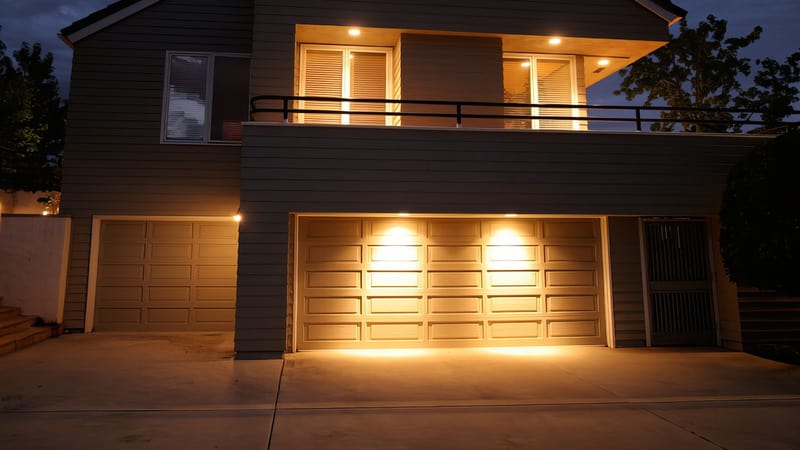
- IP44 Rating
IP44 is generally a good option for most outdoor spaces. It prevents small solid objects from entering the housing and withstands spraining water (light rain).
Examples: Wall lights, street lamps, and other above-ground outdoor lights.
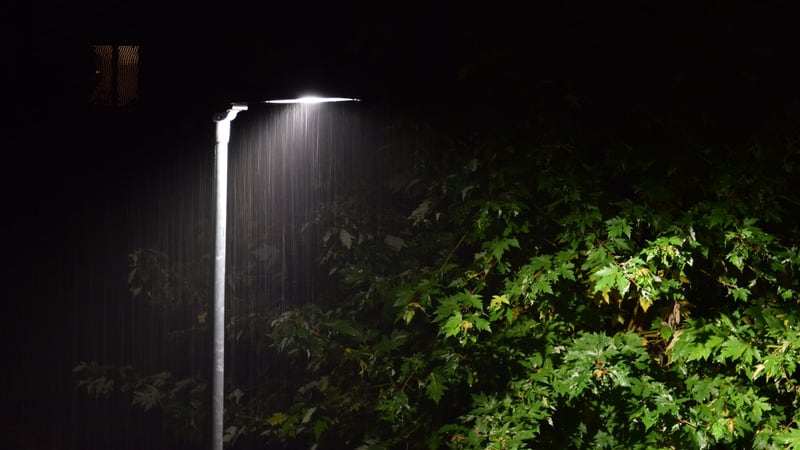
- IP65 & IP66 Rating
A high IP rating like 65 or 66 will safeguard your outdoor lights against dust (particles under 1mm or 0.04 in.) and low-pressure water jets (heavy rains). Near-ground or in-ground lights must have IP ratings of 65, 66, or higher.
Examples: Garden spike lights, path lights, and short spotlights.
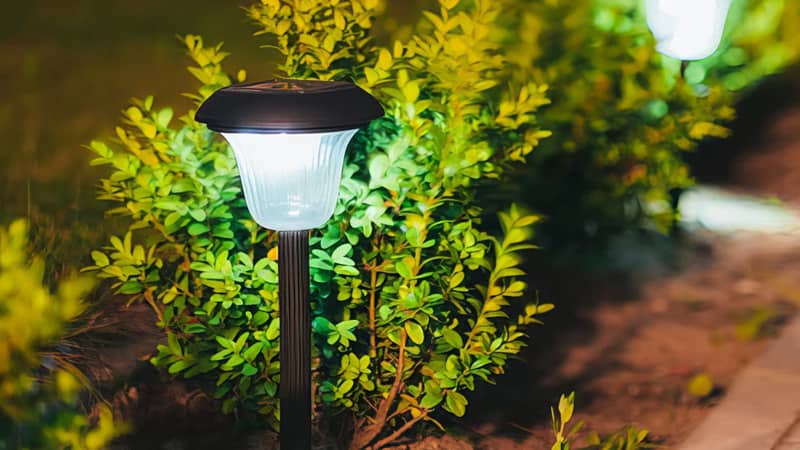
- IP67 & IP68 Rating
IP ratings of 67 and 68 are the highest commercial certifications. Such light fixtures are completely waterproof, and even high-pressure water jets won’t be a challenge.
Examples: Pool lights, Fountain lights, and recessed garden & path lights.
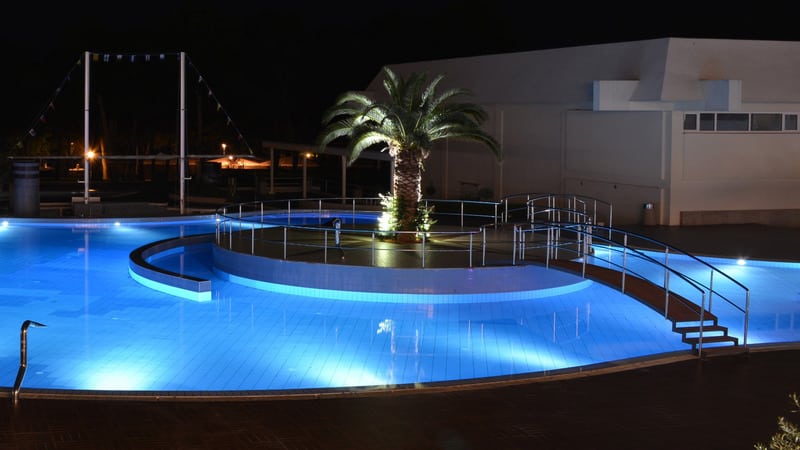
- IP69 Rating
IP69(or IP69K) is light’s best IP rating, providing even more protection than the standard IP68 rating. Such lights are not meant for outdoor use. Instead, they are better suited as indoor lights at industrial locations.
IP69-certified lights can resist high-pressure and high-temperature jet sprays.
- Only Waterproof IPX6 Rating
Occasionally you will see an IPX6 or IPX7-rated lighting fixture. The “X” before the number means the product was not tested for dust resistance. However, it should be noted that a water-resistant light will also have some level of dust protection.
- Only Dust Proof IP6X Rating
Dustproof lighting is more common than its waterproof counterpart. After all, preventing dust penetration into a light fixture is easier than preventing water penetration.
Dust Proof light fixtures are ideal for factory use, where the risk of wood or metal power ingress is higher than water ingress.
Conclusion
IP ratings for outdoor lighting have become a necessity. They are a convenient and easy way to identify a product’s level of protection against environmental effects. Modern outdoor lighting designs demand a lot from these light fixtures. Many popular outdoor lighting techniques would not be possible without fully waterproof lighting.
IP ratings have made finding the right lights for the right application a piece of cake.
Don’t Compromise on Quality – Get IP-Certified LED Lights from RC Lighting!
RC Lighting is an industry-leading manufacturer and supplier of LED lighting solutions. We have been shipping exceptional quality products, including LED indoor and outdoor lighting, on time and within budget to over a hundred countries across the globe.
RC Lighting’s commitment to premium quality and outstanding customer service has cemented our position as a trustworthy and reputable company. Have a custom design in mind? Our expert engineers are here to help bring your ideas to life.
Don’t settle for less – choose RC lighting products for superior performance and durability.



